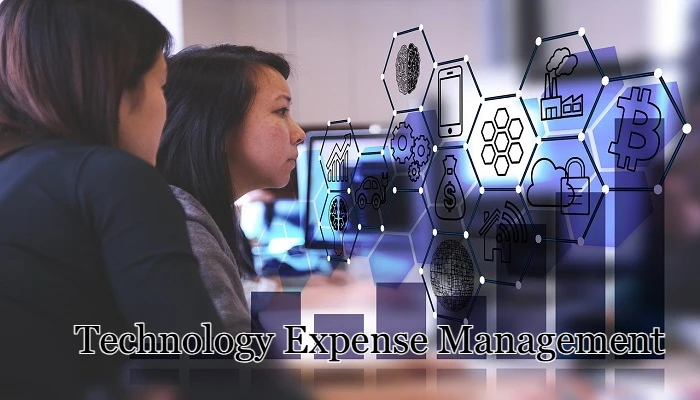
In every modern business, technology has quietly become the biggest monthly bill after payroll. From cloud storage to SaaS tools, from company laptops to mobile data plans — every service, subscription, and renewal adds up. The tricky part? Most organizations have no clear idea of how much they’re really spending or where that money is going. This is why technology expense management has become such a vital part of financial control. It’s not just about cutting costs; it’s about bringing order, visibility, and accountability to the ever-growing world of tech spending.
Let’s take a deep look at what technology expense management actually means, why it matters, how technology expense management software makes the job easier, and how companies can put it into practice effectively.
1. What Is Technology Expense Management?
Technology expense management — often shortened to TEM — is the discipline of tracking, managing, and optimizing all technology-related expenses within an organization.
That means everything from:
- Telecom bills and mobile plans
- Cloud storage and computing costs
- Software and SaaS subscriptions
- Hardware purchases and maintenance
- Licensing and renewals
In simple terms, TEM is about knowing what you’re paying for, who’s using it, and whether it’s worth it.
Imagine running a business with dozens of departments, each signing up for different tools: one team pays for Zoom, another for Teams, someone else uses Slack, and marketing adds five new subscriptions this month. Without oversight, this creates “subscription chaos.”
Technology expense management brings all of that together. It helps identify duplication, unused services, and spending patterns — turning confusion into clarity.
TEM also builds a bridge between IT, procurement, and finance. IT knows what tools people use; finance knows what they cost. TEM connects those dots, ensuring decisions are data-driven and budgets are realistic.
2. Why Technology Expense Management Matters
Technology costs today behave like quicksand — the more tools you add, the faster you sink. Businesses that don’t actively monitor their digital spending soon find themselves buried under renewals, invoices, and unexplained charges.
Here’s why technology expense management has become so essential:
The Technology Explosion
A decade ago, most companies had a few basic systems and an internet plan. Today, even small businesses rely on dozens of SaaS apps, cloud servers, and automation tools. Each comes with its own billing cycle and price model. Without organization, these costs spiral.
Uncontrolled Subscriptions
It’s common for companies to discover they’ve been paying for old software that nobody uses. Maybe a former employee subscribed years ago, and the payment just kept going. Technology expense management catches those hidden leaks before they drain your budget.
Vendor and Contract Confusion
Vendor contracts are full of renewal dates, rate changes, and cancellation terms. Missing just one deadline can cost thousands in unwanted renewals. TEM systems track all those details automatically, saving both time and frustration.
Data Transparency
When spending data is scattered across departments, you can’t make smart decisions. TEM gives leaders a complete picture — how much the company spends on cloud tools, telecom, hardware, or any category — and shows where optimization is possible.
Accountability and Efficiency
By connecting IT and finance, TEM creates a shared responsibility for every dollar spent. Instead of blaming each other when budgets run over, both teams can see the same information and work together to improve results.
3. What Is Technology Expense Management Software?

While the concept of TEM can be managed manually, most businesses today rely on dedicated technology expense management software to handle the complexity.
This software works like a central dashboard that gathers invoices, usage data, and contracts from every tech vendor — then analyzes them in real time.
Here’s what it typically does:
- Centralizes Data: It pulls in information from telecom bills, SaaS subscriptions, cloud providers, and hardware purchases into one unified view.
- Validates Invoices: The system checks for overbilling, errors, or duplicate charges. You immediately know if a vendor charges more than agreed.
- Tracks Renewals: Automatic alerts warn you before a contract renews, so you can review whether to continue, negotiate, or cancel.
- Analyzes Usage: Reports reveal which tools or services are actually being used and which are sitting idle.
- Allocates Costs: You can assign expenses to specific departments or projects to improve accountability.
- Automates Reports: Instead of building spreadsheets, you get clear dashboards showing trends, totals, and opportunities for savings.
Good TEM software doesn’t just track costs — it helps companies act on them. It turns raw billing data into insights that drive smarter decisions.
4. The Benefits of Using Technology Expense Management
The impact of technology expense management goes far beyond saving money. When done right, it improves decision-making, strengthens financial discipline, and builds a healthier business culture.
4.1. Clear Cost Visibility
Instead of juggling spreadsheets and chasing invoices, you get one transparent view of all your technology spending. It’s easier to spot where money is being wasted and where investment brings real value.
4.2. Substantial Savings
Many companies using TEM discover they can cut 10–25% of their annual tech budget without affecting productivity. Those savings often come from cancelling redundant subscriptions or negotiating better rates.
4.3. Smarter Vendor Management
When you know exactly how much you spend with each vendor, you’re in a stronger position to renegotiate contracts or consolidate services. TEM gives you the facts you need to negotiate confidently.
4.4. Stronger Collaboration
Finance teams often struggle to understand IT costs, while IT teams don’t always see the financial side. With TEM, both teams share the same dashboard and insights, creating smoother communication.
4.5. Risk Reduction
Expired licenses, forgotten renewals, or unauthorized purchases can create compliance risks. Technology expense management prevents these mistakes by keeping records current and alerts active.
4.6. Time Efficiency
Automated tracking and reporting save dozens of hours every month. Your finance team spends less time chasing data and more time on analysis.
4.7. Data-Driven Budgeting
With years of spending history stored in your TEM system, you can forecast future expenses with accuracy and confidence.
5. Common Pitfalls When Managing Tech Expenses
Implementing TEM isn’t difficult, but it requires discipline. Many companies struggle because they treat it as a one-time task rather than an ongoing process.
Here are a few pitfalls to avoid:
- Working in Silos: If IT, procurement, and finance don’t share data, you’ll miss important connections. Collaboration is key.
- Neglecting Updates: A system is only as good as the data inside it. Always keep your inventory, invoices, and user lists up to date.
- Overlooking Training: Staff should understand how the TEM software works and how to use its insights.
- Chasing Perfection: Don’t wait until every piece of data is perfect to start. Begin with what you have and improve over time.
- Ignoring Small Charges: Even minor recurring fees add up. Pay attention to low-cost subscriptions — they often hide the biggest waste.
6. How to Implement a Technology Expense Management Strategy

Building an effective TEM strategy takes planning, but the payoff is well worth it. Here’s how to start:
Step 1: Audit Your Technology Landscape
Gather every invoice, subscription, and device record you can find. The goal is to create a complete picture of your current spending.
Step 2: Identify Problem Areas
Look for duplicate tools, unused accounts, or services that no longer match your needs.
Step 3: Choose the Right Technology Expense Management Software
Pick a solution that fits your company’s size, complexity, and tech environment. Ensure it integrates with your accounting or ERP system for smooth reporting.
Step 4: Define Roles and Processes
Decide who approves new purchases, who monitors usage, and who handles renewals. Clear ownership prevents confusion later.
Step 5: Monitor Continuously
Review reports monthly or quarterly. As your technology evolves, so will your expenses. Continuous monitoring keeps costs under control.
7. A Realistic Example
Let’s imagine a company with 200 employees spread across several offices. They use over 60 SaaS applications, have multiple mobile providers, and operate hybrid cloud systems.
When they first audit their tech spending, they discover:
- $10,000 per month in duplicate software licenses.
- Dozens of mobile devices still billed under old plans.
- Unused cloud instances running 24/7, wasting energy and money.
After implementing technology expense management software, they:
- Consolidate vendors and renegotiate contracts.
- Cancel unused subscriptions.
- Set automated renewal reminders.
- Track usage by department, assigning accountability.
Within the first year, they save nearly 20% of their total technology budget — and for the first time, the CFO and IT director share the same data when discussing budgets.
8. The Future of Technology Expense Management
The future of TEM is automation, intelligence, and sustainability.
Emerging platforms are now using AI to detect anomalies automatically — for instance, spotting when a cloud server runs after hours or when a subscription’s price increases unexpectedly.
We’ll also see stronger integration with FinOps, the financial management practice for cloud computing. This connection helps companies balance cloud innovation with cost discipline.
Sustainability will also play a role. Future TEM tools will track the carbon impact of data centers, device lifecycles, and e-waste disposal — helping companies meet environmental goals while managing costs.
9. Key Takeaways
- Technology expense management is about gaining control and clarity over every tech-related cost.
- It ensures that technology spending supports business value instead of draining resources.
- Technology expense management software automates and simplifies the process, saving both money and time.
- The benefits include cost reduction, improved efficiency, and better collaboration between IT and finance.
- TEM is an ongoing effort — not a one-time fix — that grows more valuable as your digital environment expands.
Final Thoughts
Technology is essential, but without structure, it becomes a silent budget killer. Companies that embrace technology expense management gain the ability to see, understand, and optimize their digital investments.
With the right technology expense management software, you can stop guessing about where your money goes and start making every tech dollar count.
At its heart, TEM isn’t about restricting growth — it’s about fueling smarter growth. When your technology spend is transparent and well-managed, innovation becomes easier, decisions become clearer, and your organization stays financially strong in the digital age.
